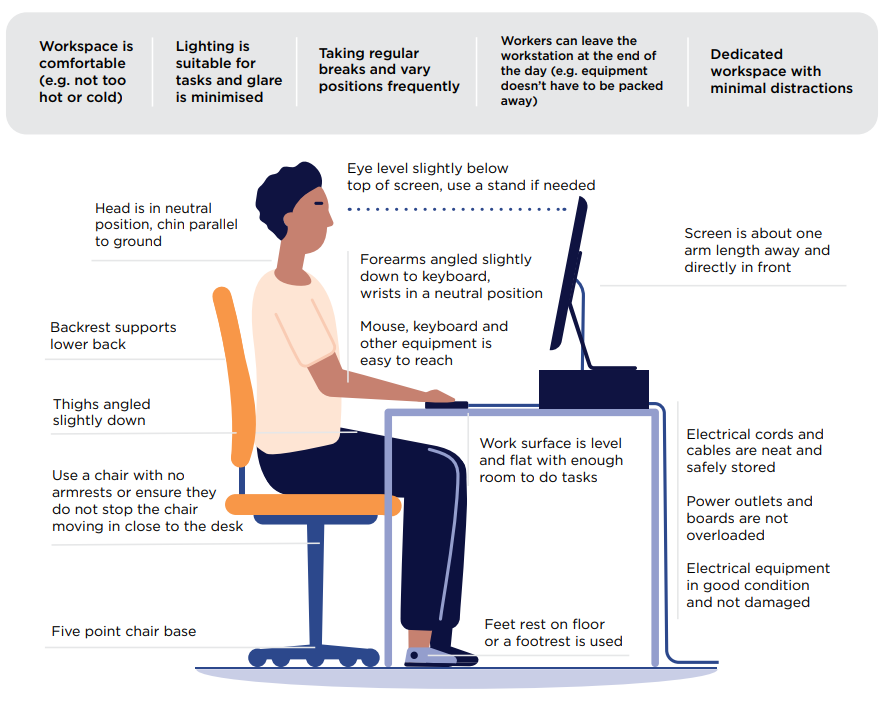Before the COVID-19 pandemic, remote work was being explored by some companies, but its adoption was relatively slow and limited. The pandemic forced employers to adapt to remote working conditions, and while this offers many benefits, it also comes with it’s own risks and challenges.
 The modern work landscape has challenged traditional work norms with many organisations now looking into what the future of work looks like. From an organisational perspective, it has been challenging for many organisations to get their workers back into the “office” prompting a re-evaluation of how work is organised, performed and managed.
The modern work landscape has challenged traditional work norms with many organisations now looking into what the future of work looks like. From an organisational perspective, it has been challenging for many organisations to get their workers back into the “office” prompting a re-evaluation of how work is organised, performed and managed.
The “working from home” model has challenged the status quo, forcing employers to negotiate a combination of in-office and remote work, often referred to as a hybrid work model.
From a workplace health and safety perspective, WHS laws apply for working from home just as they do in traditional workplaces such as offices. Working from home may change WHS risks or create new ones, so it is essential to do a risk assessment. Safe Work Australia have recently published new resources like the infographic below, which provide practical guidance on how to meet WHS duties when working from home.
There are various factors to consider when adopting a post-pandemic work strategy, with many organisations likely to adopt a more flexible approach that combines the benefits of remote work with the advantages of in-person collaboration. With the ergonomic risks covered above, let’s look at other factors that can effect a workers mental health both positively and negatively.
Human Interaction and Collaboration: While remote work offers flexibility and the ability to work from anywhere, it also lacks the in-person interaction and spontaneous collaboration that can occur in an office setting. Many people value the social aspect of the workplace and find that face-to-face interactions foster creativity, innovation, and stronger team dynamics. Remote workers can sometimes feel isolated and disconnected from their colleagues, leading to feelings of loneliness and a lack of social interaction.
Company Culture: Physical office spaces often play a crucial role in building and maintaining a company’s culture. Shared spaces can help communicate the company’s values, mission, and identity. Maintaining a strong company culture can be more difficult when employees are working remotely. Building relationships, onboarding new employees, and fostering a sense of belonging can be challenging in a virtual environment.
Communication Challenges: Effective communication is essential for any organisation. Misunderstandings, lack of context, and delays in communication can hinder productivity and collaboration. Although this can happen both remote and in-person, efficient communication can be more difficult in a remote work setup.
Employee Preferences: Different individuals have varying preferences for where they work. Some people thrive in a remote work setup, while others prefer the structure and routine of an office. Home environments can be full of distractions that hinder productivity which some employees may find challenging.
Work-Life Balance: The ability to work remotely has provided employees with greater flexibility in managing their work schedules and personal lives. This can lead to improved work-life balance and job satisfaction. On the flip side, it can also blur the boundaries between work and personal life. Without clear boundaries, remote workers might struggle to disconnect from work, leading to burnout and reduced overall well-being. Having a dedicated office space outside of the home can help create a clear separation between work and leisure.
Geographic Considerations: Remote work can enable companies to tap into a global talent pool. However, it can also lead to coordination challenges and communication delays dealing with colleagues or clients in different time zones.
Unequal Access: Not all employees have access to a suitable home workspace or the necessary technology for remote work, potentially creating inequalities within the workforce. Remote workers might also feel that they are missing out on networking opportunities and face-to-face interactions that can contribute to career growth and advancement within the company.
Technology Infrastructure: Remote work heavily relies on robust internet connectivity, cybersecurity measures, and digital communication tools. Technical problems, unreliable internet connections, and IT issues can disrupt remote work and cause frustration. Remote work can pose cybersecurity risks if employees are not using secure networks or following proper data protection practices. This can lead to breaches of sensitive company information. There is a significant financial cost to upgrading IT equipment which may not be feasible for small business operators.
Given these factors, it’s important to recognise that remote work is not a one-size-fits-all solution and that finding the right balance between remote and in-person work will depend on the nature of the work, industry norms, operational requirements, and individual preferences.
It is however, crucial to address any potential challenges by establishing clear communication strategies, setting boundaries, maintaining regular check-ins and providing the necessary support for employee well-being and safety.
If you would like to find out more about risk assessments for both physical and psychosocial hazards, we offer training and consulting services to cover these important areas. Get in touch today on 1300 585 128 or visit our Safety Training Australia and/or Safety Consultants Australia websites.




 Safety Australia Group
Safety Australia Group